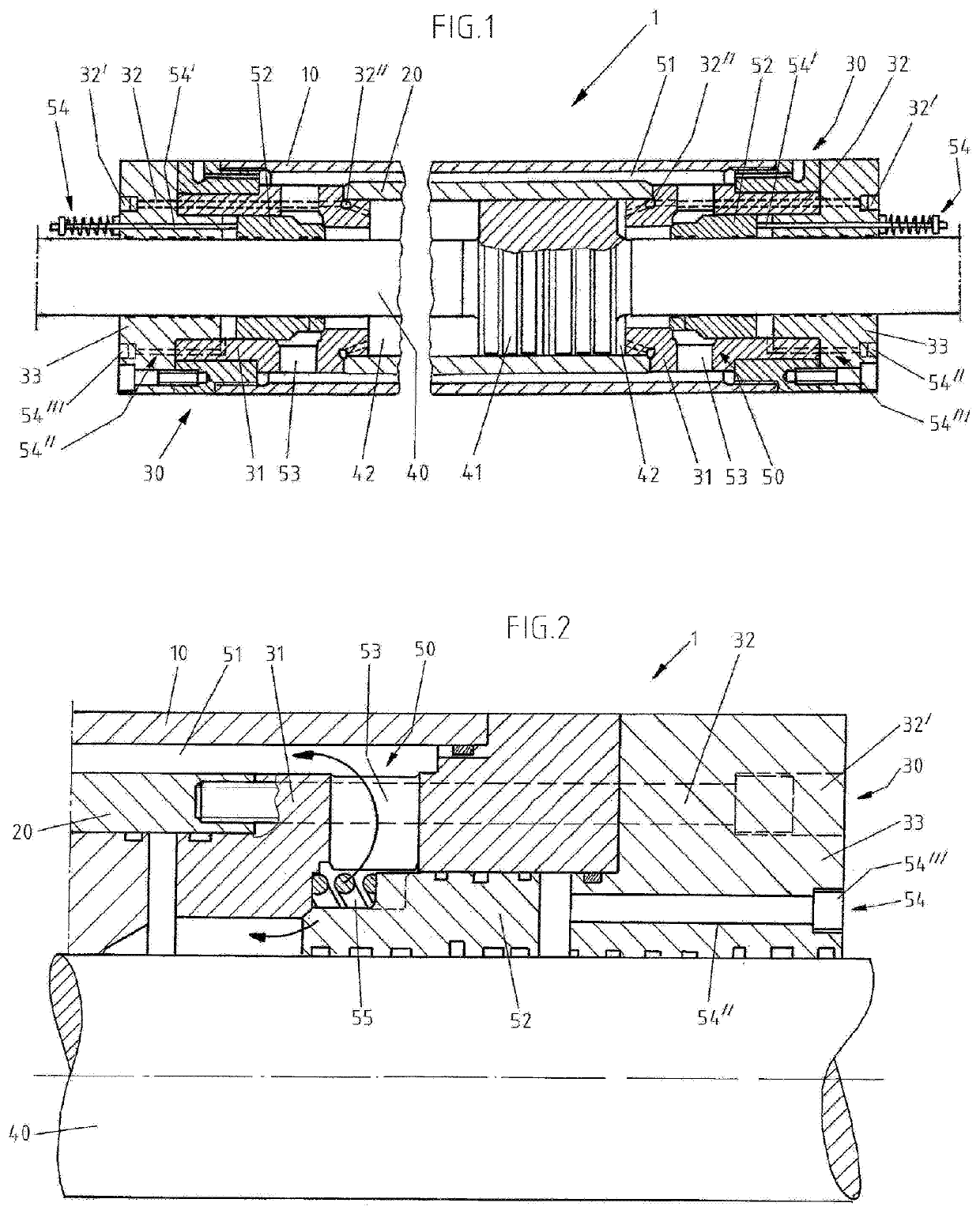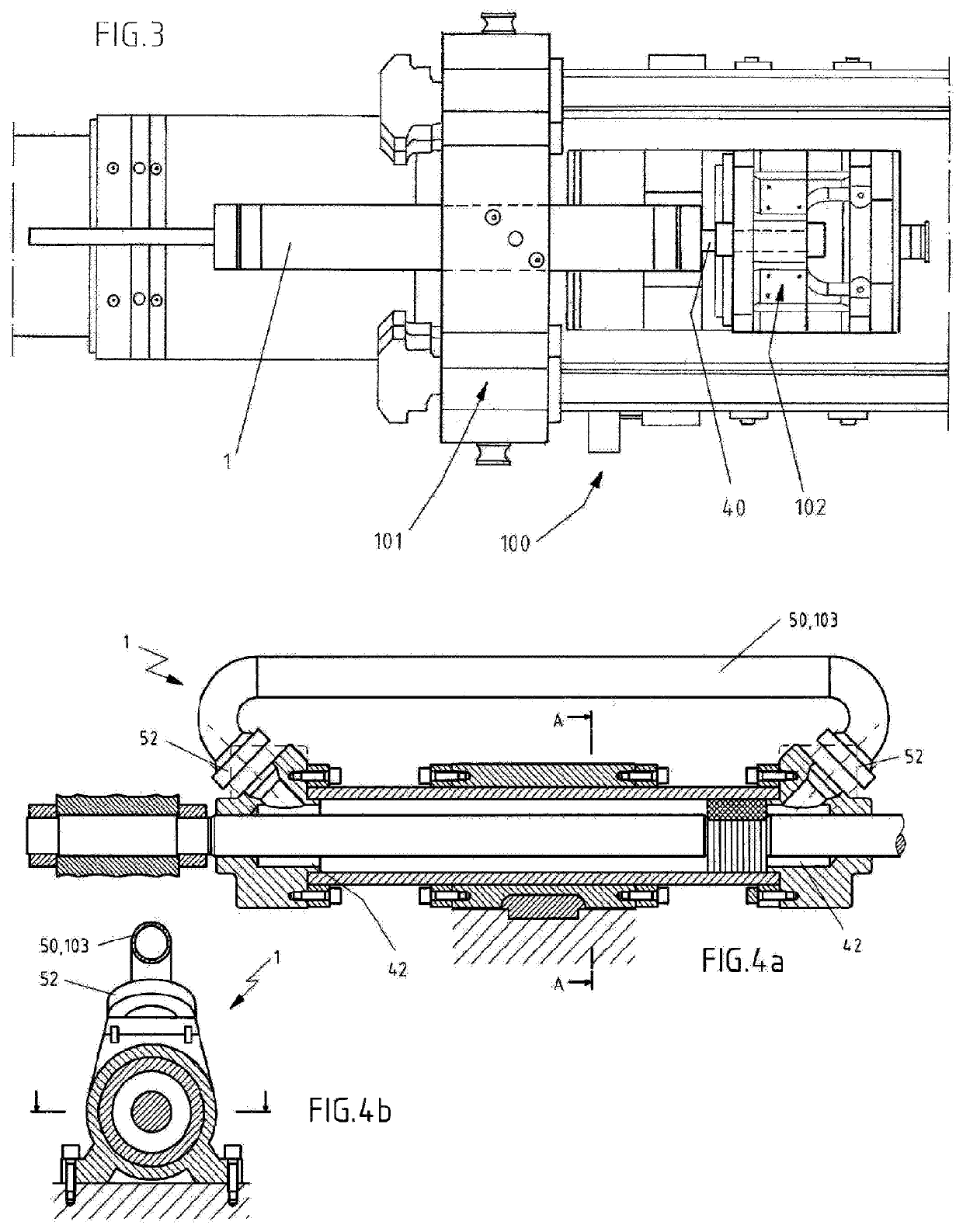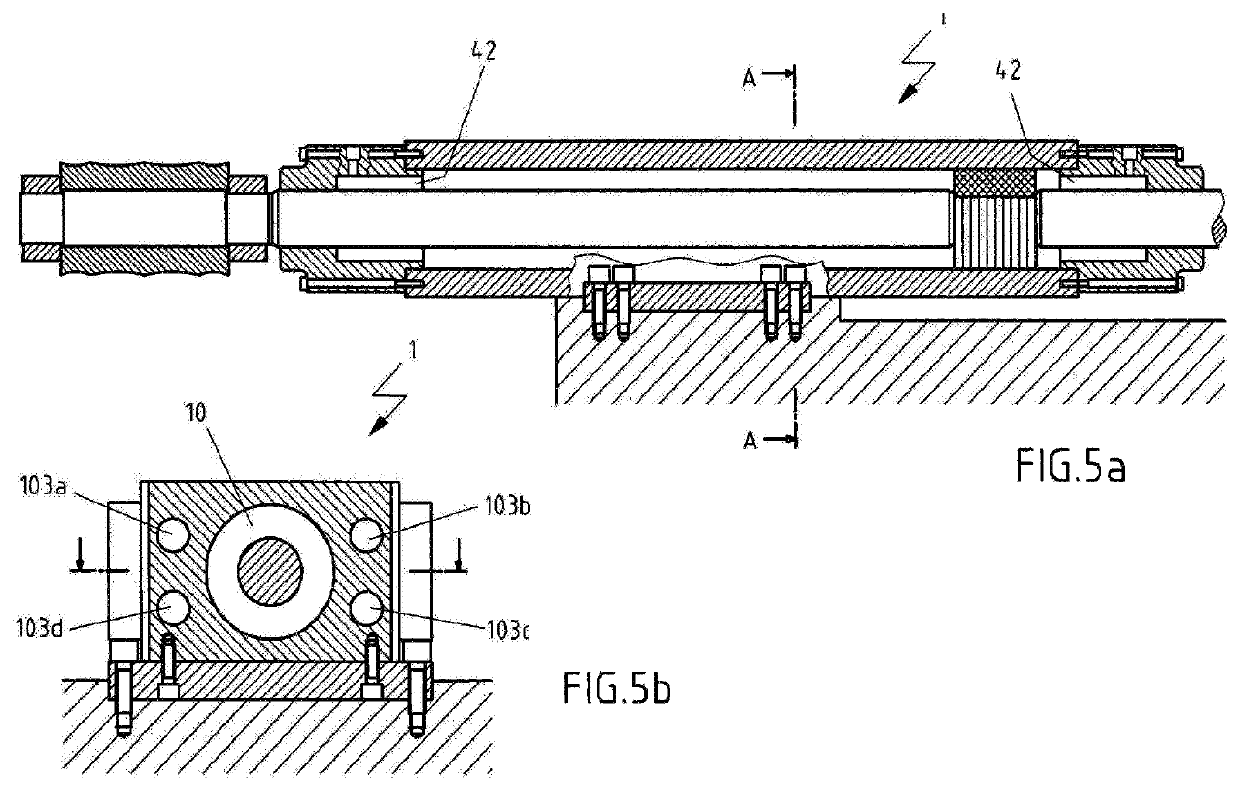Synchronizing cylinder for extruder
a synchronizing cylinder and extruder technology, applied in the direction of servomotors, servomotor components, servometer circuits, etc., can solve the problems of flow technology disadvantage, and achieve the effect of efficient and rapid movement, efficient and rapid movement of the plan
- Summary
- Abstract
- Description
- Claims
- Application Information
AI Technical Summary
Benefits of technology
Problems solved by technology
Method used
Image
Examples
Embodiment Construction
[0024]Preferred embodiments are described in the following on the basis of FIG. 1. In that case identical, similar or equivalent elements are provided with identical reference numerals and repeated description of these elements is partly dispensed with so as to avoid redundancies.
[0025]FIG. 1 shows a double-rod ram 1. More precisely, the two ends of the cylinder 1 are shown in longitudinal section that in the present embodiment are constructed substantially in mirror symmetry.
[0026]The hydraulic cylinder 1 has a hollow outer cylinder 10, a hollow inner cylinder 20, and on each of the left and the right a head section 30 and a piston rod 40 with a work piston 41 integrated therein or connected therewith. The head section 30 has a cylinder head support 31 and a cylinder closure 33, whereby the hydraulic cylinder 1 is closed at both ends and the inner cylinder 20 is fixed relative to the outer cylinder 10. The inner cylinder 20 is inserted into the outer cylinder 10 and the two lie con...
PUM
 Login to View More
Login to View More Abstract
Description
Claims
Application Information
 Login to View More
Login to View More - R&D
- Intellectual Property
- Life Sciences
- Materials
- Tech Scout
- Unparalleled Data Quality
- Higher Quality Content
- 60% Fewer Hallucinations
Browse by: Latest US Patents, China's latest patents, Technical Efficacy Thesaurus, Application Domain, Technology Topic, Popular Technical Reports.
© 2025 PatSnap. All rights reserved.Legal|Privacy policy|Modern Slavery Act Transparency Statement|Sitemap|About US| Contact US: help@patsnap.com



